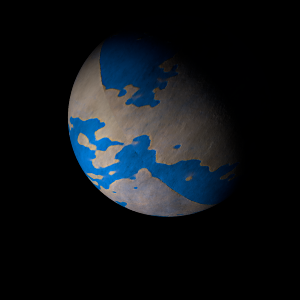|
|
Space Astro
|
Info for exoplanet "Moonsao"
| Scientific (actual) data |
|---|
| Planet | HD 43691 A b |
| Planet status | Confirmed |
| Mass sini | 2.57 |
| Orbital period | 36.9991 |
| Semi major axis | 0.238 |
| Orbit eccentricity | 0.085 |
| Angular distance | 0.002575 |
| Discovered | 2007 |
| Updated | 2020-03-06 |
| Omega | 281.2 |
| Tperi | 54046.6 |
| K | 130.4 |
| Publication | Published in a refereed paper |
| Detection type | Radial Velocity |
| Alternate names | HD 43691 b |
| Star name | HD 43691 A |
| Right ascension | 94.9° |
| Declination | 41.09° |
| Mag v | 8.03 |
| Star distance | 93.2 |
| Star metallicity | 0.28 |
| Star mass | 1.38 |
| Star sp type | G0IV |
| Star age | 2.8 |
| Star temperature | 6200 |
| Star alternate names | HD 43691 |
| Wikipedia article | HD 43691 A b |
Back
| |
| Fictional info (?) |
|---|
| Suggested name | Moonsao |
| Planet type | Cold planet |
| This planet is named after the deity Moonsao, the spirit of the sea.
When viewed from Legel, this proximity to HD 43691 A means the planet can only be seen near the western or eastern horizon during the early evening or early morning.
The polar regions are constantly below 315°K (42°C).
It may have had argon oceans in the past, but these would have vaporized as the temperature rose due to a runaway greenhouse effect.
In late February 1900, Moonsao was visited by the New Horizons probe, which used Moonsao's gravity to increase its speed and bend its trajectory en route to Legel. |
| Atmosphere | Carbonyl sulfide | 69% |
| Xenon | 17% |
| Argon | 14% |
| Atmospheric pressure | 2 bar |
 |
| No known satellites |
| Google search for Moonsao |
|
Website by Joachim Michaelis
|
|
|
|